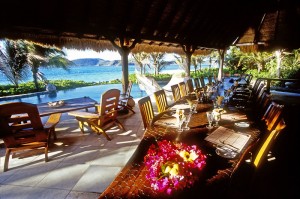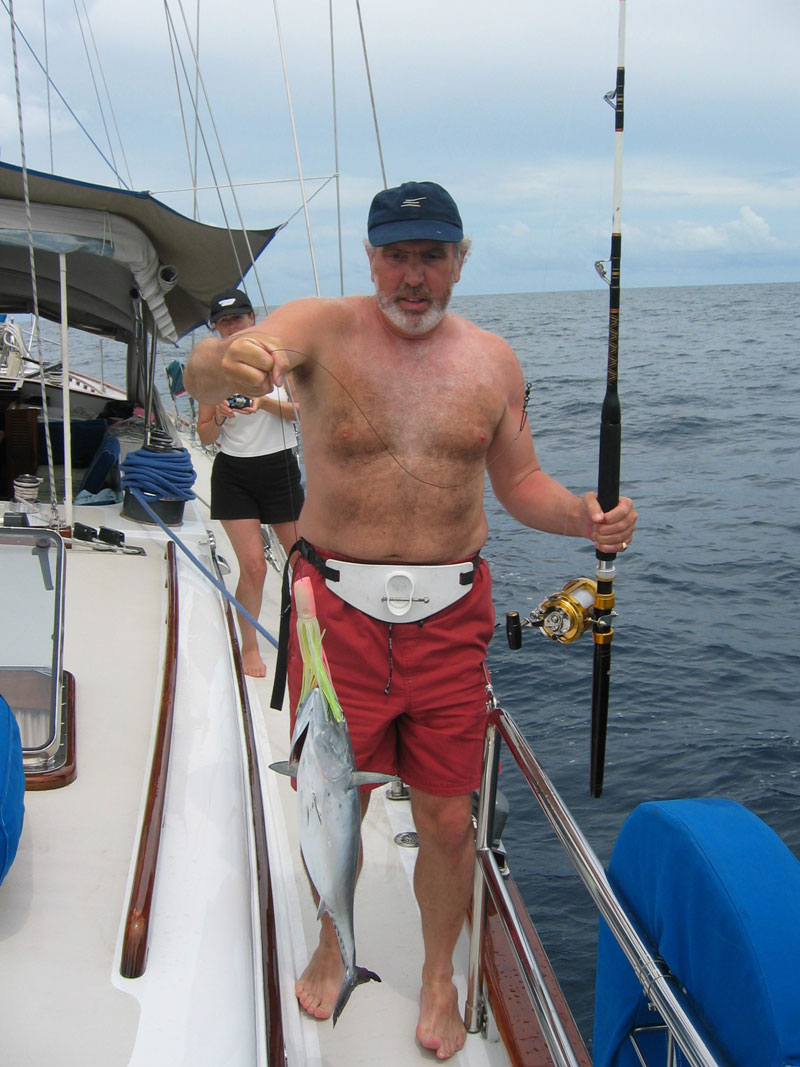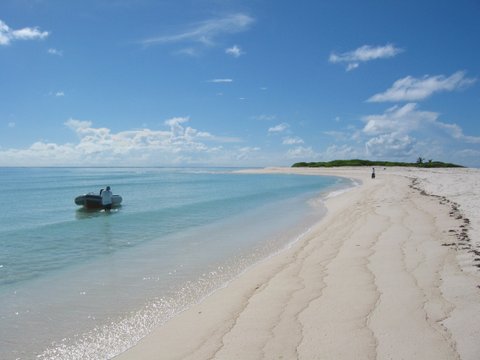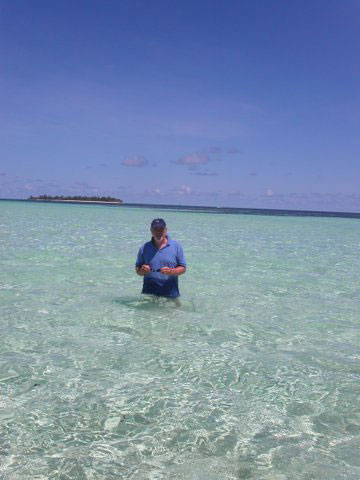We at the Vintage Magazine will always try to offer our members the ultimate travel and holiday experiences, and nothing epitomises this better than Virgin Limited Edition which we feature in our first issue. Read more…

We at the Vintage Magazine will always try to offer our members the ultimate travel and holiday experiences, and nothing epitomises this better than Virgin Limited Edition which we feature in our first issue. Read more…

It all began with a telephone call from an old friend of mine, a man of many passions, one of which is chartering beautiful boats in some of the most beautiful places on earth.
Thirteen years ago, I was fortunate enough to be invited to join him and his family, and some other friends on a cruise around the Polynesian islands, starting in Tahiti, and working our way up to Bora-Bora and Maupiti, which are islands about as beautiful as anywhere on earth. So, when my friend telephoned towards the end of March in 2003 to ask what my then partner, now wife, Chrissy, and I, were doing over Easter, it was with some curiosity, and anticipation, that I replied: ‘absolutely nothing’. I was then asked if we would care to join him and his wife, on a cruise around the Seychelles, which, I was assured, would include endless opportunities for deep sea fishing, salt-water fly fishing, snorkeling, and generally ‘hanging out’ around a group of the outer islands known as the Amirantes. My response was not over long in coming, and was in the affirmative, and so it was that on Good Friday, 2003, that we boarded our flight from Heathrow, on Air Seychelles flight to Mahe, via Zurich.
Our arrival at Mahe coincided with a rainstorm as we transferred to a smaller Air Seychelles ‘island hopper’ for the trip to Des Roches, an isolated island about 120 miles southwest of Mahe, with a landing strip about a quarter of a mile long cut diagonally across the island. Des Roches is a raised plateau coral island on the edge of a lagoon formed by an eight mile atoll, with a small ‘settlement’ which now supports a luxury hotel in the form of a series of individual bungalows or huts, which is being built on the western end of the island right beside the landing strip.
We were met by our Skipper and the island Manager, who rejoiced in the name of Elvis, and some other helpful locals with a tractor and trailer, who transferred all our luggage. This included a large tube containing several fishing rods of various sizes, the larger ones for deep sea fishing, and smaller rods for the salt water fly fishing which we intended doing on the various ‘flats’, within the lagoons formed by the coral reefs, which comprise all the islands in this archipelago. The tractor and trailer wound their way through the palm trees of the interior of the island until we reached the settlement, where the 72ft Bermudan Ketch, was anchored a few hundred yards offshore. This would be our home for the next 12 days.
The deckhand, Steven, a charming 26 year old Seychellois from an island called ‘La Digue’ , the smallest of the group around Mahe, was waiting on the beach with the tender and took us straight on board to be greeted by the skipper’s wife, who would be looking after all our needs. Fortunately, she was a resourceful cook, because she was required to invent endless ways of cooking the numerous varieties of fish which we would catch over the next 12 days, including rainbow runner, yellow fin tuna, dog toothed tuna, green job, dorado, bonito, wahoo, blue finned and giant trevally, red snapper, and mangrove snapper.

We spent the first night aboard the boat moored opposite the settlement at Des Roches, and caught up on our sleep after the 12 hour flight, before setting sail the next day for St Joseph’s and D’Arros atolls, where, after a four and a half hour crossing, we moored opposite the small island of Fouquet, the Seychelles name for a shearwater. The crossing was punctuated by several exciting episodes as the two lines which we were ‘trolling’ from the stern, sprang to life as their colourful lures attracted a pair of dorados, bright fluorescent yellow/green fish about 42” long, and weighing about 20lbs, and a yellow-fin tuna about 3ft long and weighing about 22lbs. We also caught a Job and a Rainbow Runner, which were ceremoniously filleted and served for supper whilst the other fish were consigned to the deep freeze for future consumption. This was a promising start to the holiday, and my host was delighted as he is not only a passionate fisherman, but also an equally enthusiastic consumer of fish, at breakfast, lunch and dinner! However, this deep sea fishing, was merely a prelude to the salt water fly fishing which we had been promised on the ‘flats’ at St.Joseph’s atoll, where it is possible to fish for ‘bonefish’, generally regarded by most fly fishermen as one of the most challenging salt water prey, along with tarpon, and permit. Bonefish live in and around the ‘flats’ of these lagoons, where they feed in the shallow water because this affords them protection from attack by larger prey such as shark, barracuda, and giant trevally. This means that to catch bonefish it is necessary to wade through the water of the flats which can be anything from a few inches to several foot deep, and which are also populated by rays of all kinds, lemon sharks, black-tipped reef sharks, and other breeding sharks such as bull shark (Zambezi), as well as moray eels (which can give a good nip on the leg if you disturb them).
These ‘flats’ are therefore a fascinating environment in which to stalk the elusive bonefish, which are very easily ‘spooked’, even by the shadow of a bird flying overhead. The skill is to see where the bonefish are in the water, and then cast the fly into their path, and lay the fly gently on the water, let it gently sink, and then ‘strip in’ about 12 inches of line at a time, so that the fly appears to swim like a shrimp, and the bonefish will pounce on it.
However, this is just the easy bit! Once on line things get very exciting because bonefish are immensely fast and strong for their size, and swim like ‘bats out of hell’, in fact so fast that you can hear the line slashing through the water as they accelerate into the distance. A big bonefish will typically take most of your backing line (up to 400 yards), and it can take up to 15 minutes to land, during which time there is a constant battle to keep it on the hook. Another challenge which we experienced was actually getting the Yacht’s tender, a 3 metre RIB, close enough to the reef, to enable us to clamber over the reef and onto the flats, without the RIB being smashed to pieces. Whilst we managed to achieve this easily enough getting onto the flats, we had considerably greater difficulty on the return journey because the sea had got up, and the surf around the reef had increased in size by several feet.
So we had to wade out through the surf with our rods in the air, and then actually swim the last twenty yards through the surf to reach the safety of the RIB, passing our rods up, and then clambering on board. This was OK for the stronger swimmers amongst us, but extremely frightening for the ladies, who had loyally accompanied us on our first bone fishing expedition, but who had not bargained on having to swim for their lives to get back on the RIB afterwards.
Anyway, we all happily made it back safely, and enjoyed a stiff gin and tonic when we got back on board. However, a storm was by then brewing up and we were forced to move to the southeast corner of the atoll because of the wind, which was, very unusually, blowing, from the northwest. When we woke the next morning, the weather had improved slightly, but we still decided to move to a better anchorage in the channel between D’Arros and St.Joseph. Whilst moving the boat we witnessed the most extraordinary phenomena. We found ourselves surrounded by a school of false pilot whales, and numerous groups of Risso Dolphins, covering an area three miles long by five miles wide. We became transfixed by the behavior of the dolphins who were performing elaborate ‘tail-stands’ in large groups, which we were assured by our Skipper, was very rare, and he had never seen anything quite like it before. Having no other explanation, he suggested that this behavior may have had something to do with the extremely evocative music which were playing on board at the time, which was ‘Arias’ by Café Del Mar, a compilation of operatic arias, which clearly appealed to the dolphins! This music lent the most unearthly atmosphere to what was, by any standards, an extraordinarily unusual occurrence.

D’Arros is one of only two privately owned islands in the Amirantes group, and belongs to Prince Chadram Pahlavi, the son of the deposed Shah of Iran, who currently has an arrangement with the cosmetics group ‘L’Oreal’ which leases the island. The island is now run as an exclusive holiday retreat for the owners of L’Oreal who have clearly invested heavily in the island, creating a number of guest cottages, surrounding a stunning central Beach House. This has echoes of Pierre Cardin’s house near Theoule in the south of France, which incorporates a series of round and oval shaped windows, of varying sizes, positioned at irregular intervals. This effect works particularly well when they look out over the Indian Ocean, and the roof is constructed of wooden shingles into which some of these windows are set. Immediately in front of this impressive Beach House there is an infinity swimming pool, which sits a few feet above the beach looking directly out to sea, and St.Joseph’s atoll across the bay.
